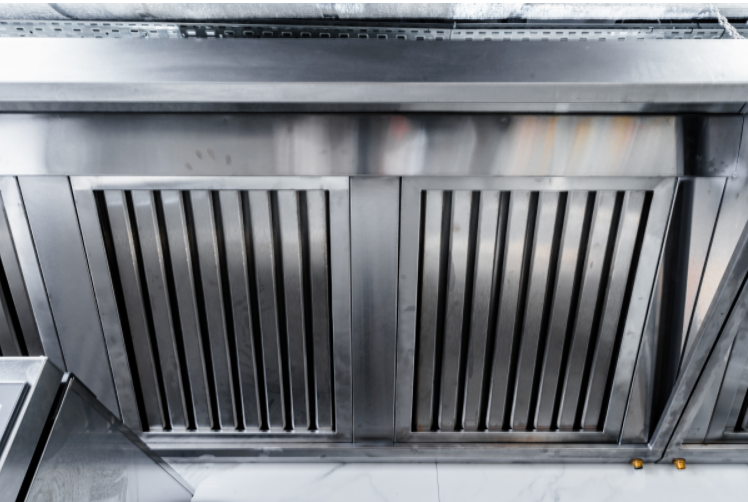HOOD CLEANING 101
What should I know about my kitchen exhaust system?
Your kitchen exhaust system must meet NFPA code 96.
If your exhaust system doesn’t meet NFPA code 96 it can’t be cleaned properly
Your exhaust cleaning company is only required to clean accessible areas of your exhaust system. This means that if you don’t have access panels installed on your ductwork or a hinge kit on your fan. Your exhaust cleaning company is not liable in the event of a fire. The owner of the business is ultimately responsible for maintaining there own kitchen exhaust system.
Your exhaust system must be made fully accessible.
Ductwork: All horizontal ductwork must have access panels installed every 12’ and at every change in direction. All vertical ductwork must have access panels installed on every floor, at the top of the vertical riser and within 3 feet of the fan.
Exhaust Fan: If you have an up blast fan your exhaust fan should have a hinge kit with hold open service retainers. In addition there should be a water tight electrical box on the side of the roof pedestal with flexible water tight conduit powering your exhaust fan. If you have a Utility fan you must have an access within 3’ of the fan as well as access to the fan blades for proper cleaning.
Once your exhaust system has been updated (if necessary) to NFPA 96 and has been cleaned in accordance with the code you will receive a hood sticker. The hood sticker will be placed on the outside of your hood. This sticker tells your local fire inspector that your kitchen exhaust system was cleaned in accordance with NFPA Code 96. In addition to placing a sticker on your hood, your exhaust cleaning company should provide you with documentation informing you that your exhaust system has been cleaned in accordance with NFPA Code 96. This report should list any deficiencies in your exhaust system.
Common deficiencies found in kitchen exhaust systems
Is your exhaust system accessible?
Are sufficient access panels provided?
Ductwork: Horizontal ductwork should have access panels installed every 12' and at every change in direction. Vertical duct should have access panels installed at every floor and at the top of the riser.
Exhaust Fans: Upblast fans are required to have a hinge kit installed with service hold openers as well as a liquid tight external electrical box. Utility fans require an access door within 3' of the intake and on the fan housing, also a drain should be installed at the low point of the fan housing.
The City of Boston requires a general drawing of your exhaust system to be stored onsite by the customer. This drawing will need to include your hood, ductwork with access panels, and fan. The drawing doesn't have to be engineered.
The exhaust system appears to be liquid tight
Each section of your ductwork should be welded liquid tight. Having your ductwork welded liquid tight will prevent grease from leaking and causing a fire hazard above your ceiling where there is no fire protection. Your hood should also be welded to your ductwork.
Cleaning frequency, is it time to schedule your cleaning?
Monthly: Systems serving solid fuel cooking (hardwood or charcoal).
Quarterly: Systems serving high-volume cooking such as 24-hour cooking, charbroiling or wok cooking.
Semi Annually: Systems serving moderate volume cooking.
Annually: Systems serving low volume cooking operations, such as churches, day camps, seasonal businesses, or senior centers.



